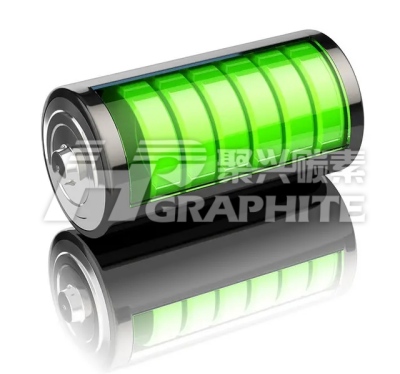【Anode Material】Waste Pitch Transformed: A New Potential Battery Anode Material?

【Anode Material】Waste Pitch Transformed: A New Potential Battery Anode Material?
On April 14, Changsha University of Science and Technology announced that the Energy Storage Research Institute, led by Professor Jia Chuan-kun, and Zhejiang Bayong New Materials Technology Co., Ltd. had signed a 14-million-yuan patent licensing and cooperation agreement for their independently developed equipment and materials for efficient oil-stone separation, pitch recovery, and resource utilization in waste pitch mixtures. This marks the successful transformation and industrialization of the disruptive technology, which can efficiently separate oil-stone and recycle waste pitch, significantly reducing the cost of battery anode materials. Learn more about negative electrode accessory products.
It is understood that about 200 million tons of waste pitch mixtures are generated every year from the maintenance of China's highway infrastructure. However, the recycling rate is low, resulting in severe resource waste and ecological environmental damage. Promoting the high resource utilization of waste road surfaces and pitch materials has become an urgent problem to solve.

Currently, the regeneration and utilization of waste pitch mixtures in China mainly involve direct blending of new and old materials, but the quality of the recycled mixtures and the utilization rate of old materials are both low. Additionally, using oil-stone separation technology for resource utilization of old materials also faces major technical challenges, such as incomplete oil-stone separation, difficulties in extracting small-sized stone materials, and significant damage to stone materials. As a result, oil-stone separation technology has not been widely used in actual engineering projects.
The team led by Jia Chuan-kun at Changsha University of Science and Technology has developed a more economical, efficient, and simple oil-stone separation technology that solves these problems while also utilizing widely available, low-cost raw materials for anode materials. "The research on using waste pitch as a carbon precursor to prepare electrode materials can both improve the utilization rate of waste pitch and alleviate the growing demand for lithium/sodium-ion battery anodes," said Jia Chuan-kun.
This research is the first in the world to use waste pitch as a carbon source to prepare high-performance, low-cost lithium/sodium/potassium-ion battery anode carbon materials, as well as "turning waste into treasure" for solid waste road garbage. It breaks through the bottleneck of recycling waste pitch mixtures in traditional transportation fields, providing new approaches for deepening the recycling of waste transportation materials and constructing green transportation, with significant economic and social benefits.
Jia Chuan-kun revealed that the oil-stone separation equipment has completed the design for processing 100,000 tons per unit per year, and the production line for 2,000 tons of pitch-based battery anode materials is being manufactured. It is expected that the oil-stone separation equipment and anode production line will be put into production by the end of this year.
In less than six months, this is the second major scientific research achievement transformed and implemented by Jia Chuan-kun's team. Previously, Jia Chuan-kun's team transferred 10 core patents of their invented all-vanadium redox flow battery technology, partnering with enterprises to jointly develop and apply key materials and systems for high-performance large-scale energy storage all-vanadium redox flow batteries.
In recent years, Changsha University of Science and Technology has continuously promoted the deep integration of the school's scientific research supply side and market industry demand side by cultivating a smooth connection between scientific research ecology and industry, strengthening the scientific research atmosphere for improving the quality of scientific and technological achievements, building a platform for the transformation and application of scientific and technological achievements, and improving the incentive mechanism for the transformation of scientific and technological achievements. In 2022 alone, the number of projects for the transfer and transformation of scientific and technological achievements reached 566, with a total contract value exceeding 200 million yuan.
In order to facilitate the transformation of scientific research results into practical applications, Changsha University of Science and Technology has implemented a series of policies to encourage researchers to assume both "scientist and engineer" roles. These policies aim to bridge the "last mile" of transforming scientific and technological achievements into real-world applications.
The successful cooperation between the university and industry partners reflects the institution's commitment to fostering strong connections between academia, research, and industry. The university's focus on cultivating a vibrant research environment and streamlining the transfer of scientific and technological achievements is expected to pave the way for more innovative breakthroughs in the future.
As China continues to advance its technological capabilities and prioritize sustainable development, the successful industrialization of this groundbreaking technology can serve as a model for other institutions and industries seeking to promote the recycling and resource utilization of waste materials. The collaboration between Changsha University of Science and Technology and Zhejiang Bayong New Materials Technology Co., Ltd. demonstrates the potential for synergies between academia and industry in addressing urgent environmental challenges while simultaneously promoting economic growth.
With the anticipated production of oil-stone separation equipment and anode materials by the end of the year, the collaboration between the university and the company is expected to make a significant impact on the recycling and utilization of waste pitch materials. This breakthrough not only has the potential to revolutionize the transportation sector but also contributes to the development of greener and more sustainable energy storage solutions. As the technology continues to mature and gain widespread adoption, it is poised to make a substantial contribution to both the economic and environmental well-being of China and beyond. For information about the negative electrode accessory market, feel free to contact us.
No related results found








0 Replies